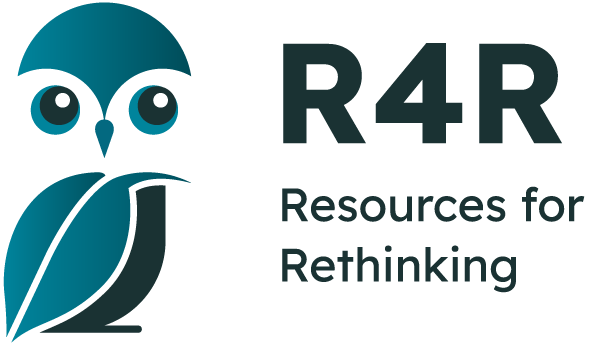- Home
- Tutorial
- Resource Guides
- Focus Areas
- LSF Programs
-
Professional
Development - Review Process
-
A project of LSF

Search for Resources
Learning from the land
Perspectives of Indigenous land-based learning and traditional knowledge from across Turtle island
Secondary, Elementary, Middle
Description
The Learning from the Land story map emphasizes the deep and enduring connection between Indigenous Peoples and the land, highlighting the importance of understanding the land as a source of life, identity, and cultural traditions. It showcases how Indigenous knowledge and practices are deeply intertwined with the cycles of nature and the seasons, and how this knowledge is passed down through generations. It emphasizes that each Indigenous community has unique relationships with the land and encourages learning directly from them. The resource serves as an introduction to the concept of learning from the land, encouraging readers to engage with local Indigenous communities and learn from their unique perspectives and experiences.
This interactive story map
- highlights how various Indigenous communities across Turtle Island connect with the land, particularly through the changing seasons.
- takes a broad look at the four seasons of spring, summer, autumn, and winter, while acknowledging that there are various ways in which different Indigenous nations and communities mark the passage of time and the changes on the land.
- focuses on the interwoven nature of land connection, cultural traditions, moon cycles, and seasonal changes in Indigenous knowledge systems
- centers on the wisdom and practices of Indigenous peoples related to the land and implicitly suggests learning from Elders and knowledge keepers within Indigenous communities as a vital way to understand the land's significance.
- presents the idea that the land itself is a teacher, offering lessons about nature, resourcefulness, and respect for all living things.
- explores how Indigenous peoples understand and interact with the land through the lens of seasonal changes, such as berry-picking, salmon runs, hunting seasons, and the blooming of medicinal plants.
- illustrates the interconnectedness between the land, cultural traditions, and the natural world from an Indigenous perspective.
- encourages students to engage with local Indigenous communities to learn from them directly about their specific relationships with the land.
- acknowledges that the examples shared through narrative text, images, videos, and other media are just a few among many diverse Indigenous relationships with the land.
The story map encourages readers to connect with local Indigenous communities to learn more about their specific relationships with the land and to appreciate the diversity of Indigenous knowledge systems. Access the story map learning activity here
General Assessment
Recommendation of how and where to use it
To enhance the learning, consider activities that engage students with the land, promote storytelling, and encourage reflection on Indigenous knowledge and perspectives. These activities can range from outdoor explorations to creative writing and discussions about land-based teachings. Use the story map as inspiration for a walk through a local natural area. Identify the plants and animals featured in the story or create a scavenger hunt based on the map's themes, such as finding different types of leaves or observing animal tracks.
Reach out to local Indigenous organizations, elders, or knowledge keepers for guidance and support in developing and implementing land-based learning activities. Facilitate discussions about the importance of passing down knowledge and stories from elders to younger generations. Incorporating personal reflection activities can encourage students to journal about their experiences, their feelings about the land, and how the story map has influenced their understanding. Have students write stories, poems, or journal entries inspired by the story map and their experiences in nature. Encourage students to engage their senses, sight, sound, smell, touch, and taste while on the land, connecting their observations to the narratives presented in the story map.
Relevant Curriculum Units
The following tool will allow you to explore the relevant curriculum matches for this resource. To start, select a province listed below.
- Step 1Select a province
- Alberta
- British Columbia
- Step 2Select a grade level
- Grade 3
- Step 3Select a subject
- Science
- Step 4Relevant matches
- Science 3: Living things are diverse, can be grouped, and interact in their ecosystems
- Social Studies
- Step 4Relevant matches
- Global Indigenous Peoples: Learning about indigenous peoples nurtures multicultural awareness and respect for diversity.
- Global Indigenous Peoples: Indigenous knowledge is passed down through oral history, traditions, and collective memory.
- Global Indigenous Peoples:Indigenous societies throughout the world value the well-being of the self, the land, spirits, and ancestors
- Grade 9
- Step 3Select a subject
- Science
- Step 4Relevant matches
- Science 9: The biosphere, geosphere, hydrosphere, and atmosphere are interconnected, as matter cycles and energy flows through them.
- Grade 11
- Step 3Select a subject
- Environmental Science
- Step 4Relevant matches
- Environmental Science 11: Human practices affect the sustainability of ecosystems
- Environmental Science 11:Humans can play a role in stewardship and restoration of ecosystems
- Manitoba
- Step 2Select a grade level
- Grade 5
- Step 3Select a subject
- Indigenous Languages and Cultures
- Step 4Relevant matches
- Cultural and Linguistic Diversity: Other Cultures: Connections and Influences
- Cultural and Linguistic Diversity: Specific Aboriginal Culture
- Grade 6
- Step 3Select a subject
- Indigenous Languages and Cultures
- Step 4Relevant matches
- Cultural and Linguistic Diversity: Other Cultures: Connections and Influences
- Cultural and Linguistic Diversity: Specific Aboriginal Culture
- Grade 7
- Step 3Select a subject
- Indigenous Languages and Cultures
- Step 4Relevant matches
- Cultural and Linguistic Diversity: Specific Aboriginal Culture
- Cultural and Linguistic Diversity::Other Cultures: Connections and Influences
- Grade 8
- Step 3Select a subject
- Indigenous Languages and Cultures
- Step 4Relevant matches
- Cultural and Linguistic Diversity: Specific Aboriginal Culture
- Cultural and Linguistic Diversity::Other Cultures: Connections and Influences
- Grade 9
- Step 3Select a subject
- Indigenous Languages and Cultures
- Step 4Relevant matches
- Cultural and Linguistic Diversity: Other Cultures: Connections and Influences
- Grade 10
- Step 3Select a subject
- Indigenous Languages and Cultures
- Step 4Relevant matches
- Cultural and Linguistic Diversity: Other Cultures: Connections and Influences
- Cultural and Linguistic Diversity: Specific Aboriginal Culture
- Grade 11
- Step 3Select a subject
- Indigenous Languages and Cultures
- Step 4Relevant matches
- Cultural and Linguistic Diversity: Other Cultures: Connections and Influences
- Grade 12
- Step 3Select a subject
- Indigenous Languages and Cultures
- Step 4Relevant matches
- Cultural and Linguistic Diversity: Other Cultures: Connections and Influences
- Cultural and Linguistic Diversity: Specific Aboriginal Culture
- Newfoundland & Labrador
- Step 2Select a grade level
- Grade 6
- Step 3Select a subject
- Social Studies
- Step 4Relevant matches
- Canada: Reflections on a Multicultural Mosaic
- Northwest Territories
- Step 2Select a grade level
- Grade 3
- Step 3Select a subject
- Science
- Step 4Relevant matches
- Science 3:Plants and Animals are diverse, can be grouped, and interact in their ecosystems
- Social Studies
- Step 4Relevant matches
- Global Indigenous Peoples: Learning about indigenous peoples nurtures awareness and respect for diversity.
- Global Indigenous Peoples: Indigenous knowledge is continues to be shared through oral history, traditions, and collective memory.
- Global Indigenous Peoples: Indigenous nations throughout the world value the well-being of the self, the land, spirits, and ancestors
- Grade 5
- Step 3Select a subject
- Indigenous Languages and Cultures
- Step 4Relevant matches
- Dene Kede: The Land
- Grade 6
- Step 3Select a subject
- Indigenous Languages and Cultures
- Step 4Relevant matches
- Dene Kede: The Land
- Grade 9
- Step 3Select a subject
- Science
- Step 4Relevant matches
- Science 9: The biosphere, geosphere, hydrosphere, and atmosphere are interconnected, as matter cycles and energy flows through them.
- Grade 11
- Step 3Select a subject
- Environmental Science
- Step 4Relevant matches
- Environmental Science 11: Human practices affect the sustainability of ecosystems
- Environmental Science 11:Humans can play a role in stewardship and restoration of ecosystems
- Nova Scotia
- Nunavut
- Step 2Select a grade level
- Grade 7
- Step 3Select a subject
- Indigenous Languages and Cultures
- Step 4Relevant matches
- Relationship to the Environment
- Science
- Step 4Relevant matches
- Interactions and Ecosystems
- Grade 8
- Step 3Select a subject
- Science
- Step 4Relevant matches
- Interactions in Our Environment
- Grade 10
- Step 3Select a subject
- Indigenous Languages and Cultures
- Step 4Relevant matches
- Relationship to the Environment
- Ontario
- Step 2Select a grade level
- Grade 5
- Step 3Select a subject
- Science & Technology
- Step 4Relevant matches
- Earth and Space Systems: Conservation of Energy & Resources
- Grade 7
- Step 3Select a subject
- Science & Technology
- Step 4Relevant matches
- Life Systems: Interactions in the Environment
- Saskatchewan
- Step 2Select a grade level
- Grade 10
- Step 3Select a subject
- Indigenous Studies
- Step 4Relevant matches
- Native Studies 10: Community and Kinship: Aboriginal Perspectives
- Yukon Territory
- Step 2Select a grade level
- Grade 3
- Step 3Select a subject
- Science
- Step 4Relevant matches
- Science 3: Living things are diverse, can be grouped, and interact in their ecosystems
- Social Studies
- Step 4Relevant matches
- Global Indigenous Peoples: Learning about indigenous peoples nurtures multicultural awareness and respect for diversity.
- Global Indigenous Peoples: Indigenous knowledge is passed down through oral history, traditions, and collective memory.
- Global Indigenous Peoples:Indigenous societies throughout the world value the well-being of the self, the land, spirits, and ancestors
- Grade 9
- Step 3Select a subject
- Science
- Step 4Relevant matches
- Science 9: The biosphere, geosphere, hydrosphere, and atmosphere are interconnected, as matter cycles and energy flows through them.
- Grade 11
- Step 3Select a subject
- Environmental Science
- Step 4Relevant matches
- Environmental Science 11: Human practices affect the sustainability of ecosystems
- Environmental Science 11:Humans can play a role in stewardship and restoration of ecosystems
Themes Addressed
Ecosystems (1)
- Appreciating the Natural World
Indigenous Knowledge (1)
- TEK -- Traditional Ecological Knowledge

